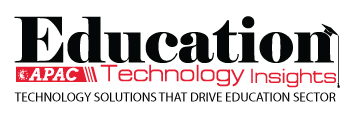THANK YOU FOR SUBSCRIBING
Be first to read the latest tech news, Industry Leader's Insights, and CIO interviews of medium and large enterprises exclusively from Education Technology Insights
Impact of Technology in Education Sector
Becky L.Vasquez , Vice President and Chief Information Officer, Embry-Riddle Aeronautical University
 Becky L.Vasquez , Vice President and Chief Information Officer, Embry-Riddle Aeronautical University
Becky L.Vasquez , Vice President and Chief Information Officer, Embry-Riddle Aeronautical UniversityBecky L. Vasquez is the Vice President and Chief Information Officer at Embry-Riddle Aeronautical University. Becky is responsible for the overall technology vision, mission, and strategy for the university. She has over two decades of experience in the field of information technology and has expertise in instructional technologies, enterprise computing, and research support. A service-oriented technologist at heart, Becky has become a champion for using systems effectively and supporting innovations. She has been a member of educational software corporation advisory boards and regularly participates in industry-wide activities that support the community and advancement of technology in education.
What are some of the measurements that you take in order to keep up with the emerging trends and technology in education?
When it comes to prioritizing technology initiatives, the institution employs diverse approaches. Through the annual technology strategic planning cycle, we collaborate with various entities to understand their business objectives, technology requirements, and strategic alignment with the university. We also participate heavily in user communities devoted to the development of technologies.
Currently, we are very excited about the deployment of an education cloud at our organization and planning to attend a Salesforce conference to learn more. Moreover, we are also involved with external organizations such as EDUCUAUSE, PMI, and SANS to stay up-to-date on trends and emerging technologies.
What are some of your recent project initiatives?
Recently we have deployed a virtual desktop environment in our education system, which gives students access to apps that were previously only available in labs and classrooms. With 24/7 access from any computer, students can now readily and conveniently access academic resources, which have revolutionized the way they interact with educational materials. This innovation has significantly increased the accessibility and availability of resources, hence enriching the learning experience for students.
"If you want to be a part of a purpose that has a tangible impact on the future, the higher education sector is the place for you."
What role do you see technology playing in the future of higher education there?
The usage of virtualization and cloud technologies in the future will change traditional classroom resources into flexible, collaborative learning spaces that can be accessed anytime, anywhere. This will generate more opportunities for the classroom of the future, which may be characterized by increased fluidity and adaptability for both instructors and students. For instance, the deployment of our chatbot powered by artificial intelligence for our students, which we have been using for a few years now, has helped us turn a corner in the classroom. We've assigned a full-time employee to it because the chatbot will need to acquire certain skills and knowledge over time and will benefit from having a human mentor to help it along the way. The team also helps by teaching the chatbot how to learn over time and by giving them access to reliable data and sources, allowing the bot to automate administrative and clerical work so that teachers and staff may focus on interacting with students in more meaningful ways. Chatbots can also be used to assist other groups, such as employees, instructors, and job candidates. Ultimately, by leveraging technology to automate transactional tasks, institutions can tap into the talent of their workforce to make a greater impact on students.
What are some of the strategies that should be followed while incorporating a new technology?
For a project that has key stakeholders, for example faculty, the most important and foundational step is to obtain buy-in and leverage a collaborative approach from the start. This implies that the project team must work closely with stakeholders to comprehend their needs and perspectives, as well as approach the project with empathy.
Priority should be given to the perspective of the individuals who need to utilize the technology. However, this doesn’t imply that the IT perspective is not important or should be disregarded. It is preferable to emphasize the significance of understanding how the technology will be utilized and ensuring that it meets business requirements. In addition, consideration for methodologies such a design thinking and agile project management can help solidify requirements and make sure they translate directly to project outcomes. Observation of how people actually use technology is often recognized as an excellent method for capturing requirements and enhancing the efficacy of technology solutions.
What would be your piece of advice for budding professionals in the field?
Working in higher education is a fantastic opportunity for those who are passionate about having a significant impact on students' futures and lives. If you want to be a part of a purpose that has a tangible impact on the future, the higher education sector is the place for you.
Read Also
Empowering Educators through Purposeful, Connected and Transformative Learning
Empowering Students to Lead: A New Vision for Civic Learning
The Director's Playbook: Strategic Digital Transformation in Rual Hyper-Growth Districts
The Art and Architecture of Student Support
From At-Risk to At-Promise: The Language Revolution Higher Education Needs
Teaching Tomorrow: How Western Governors University Is Redefining Teacher Preparation

I agree We use cookies on this website to enhance your user experience. By clicking any link on this page you are giving your consent for us to set cookies. More info






















